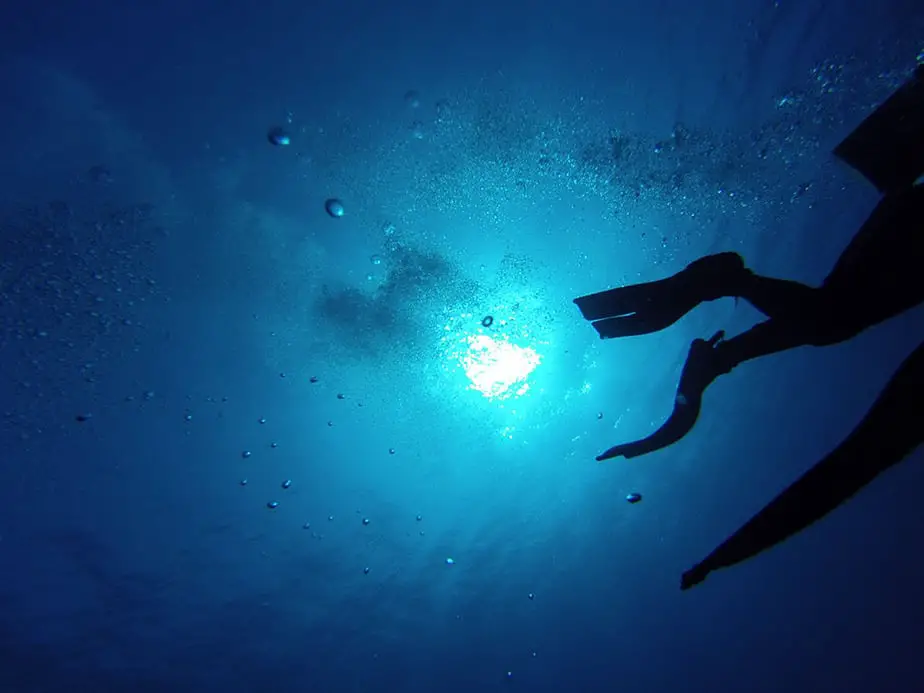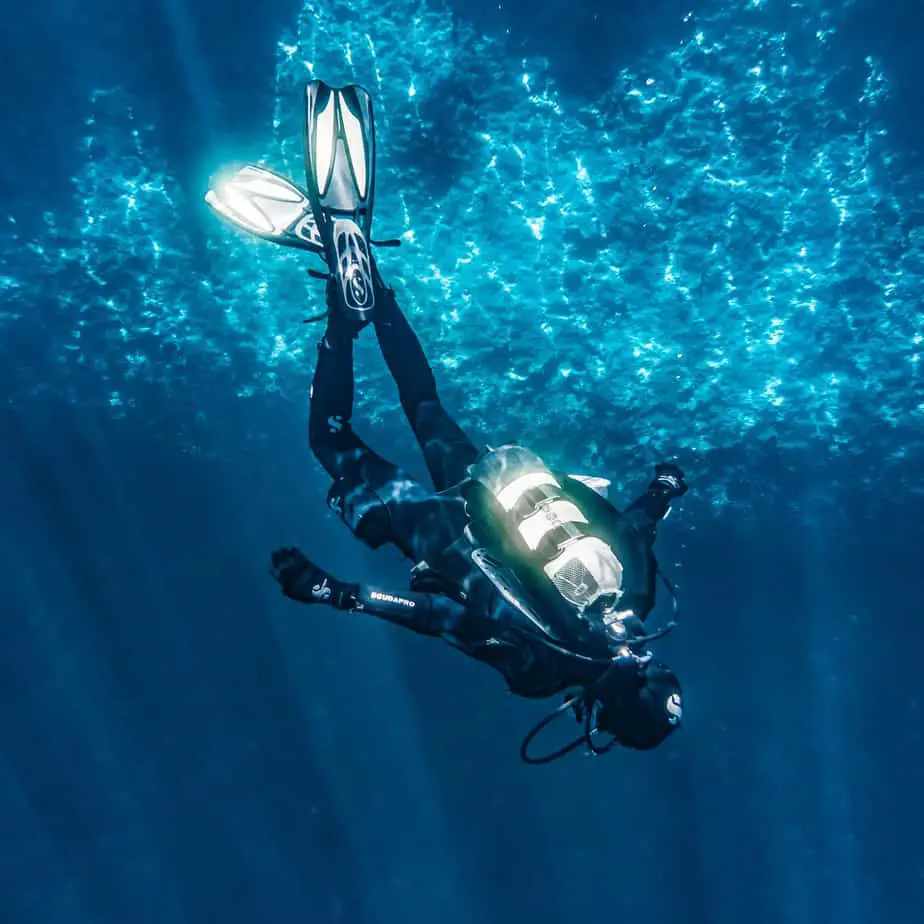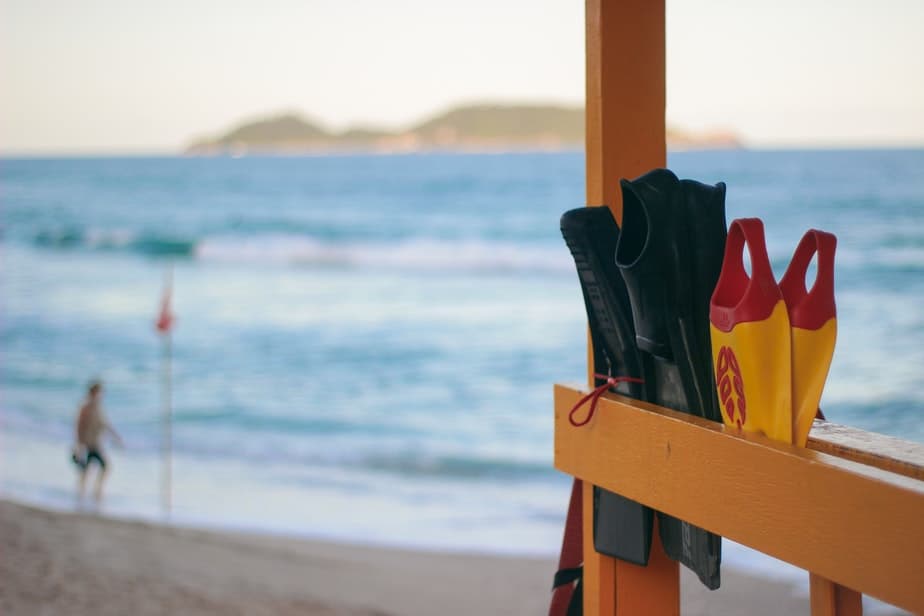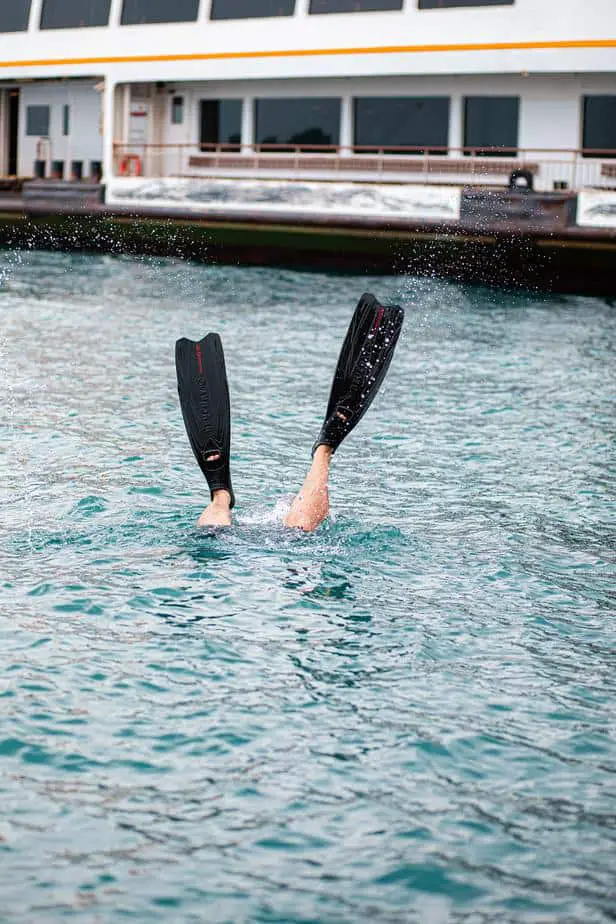If you were asked to picture a pair of fins, the image you’ll likely conjure up in your mind is a pair of paddle fins. These “regular” fins are also known as blade fins, paddle fins or full fins.
However, in recent years there has been a new blade design that has become more popular: the split fin. As the name suggests, split fins have a split down the middle which is designed to mimic the shape of whales and dolphin fins.
Historically, paddle fins were the only fins available, so both beginners and pros alike had to use them. Now, an argument is being made that for beginners, split fins may be the better option because they are easier to kick with.
In this article, we will be discussing the pros and cons of using split fins vs blade fins, and why you might prefer one over the other.
Similarities
First, let’s start this discussion off with the ways in which they are similar, just so we are clear that there is not that big of a departure between these two fin designs.
If you really think about it, the only difference is that split down the middle. That split changes how the fins work mechanically (the only major difference), but pretty much everything else is the same.
For starters, if you have a preference for open heel or closed heel designs, don’t worry; both split fins and paddle fins offer both heel types.
Next, the other factors that you’d want to consider such as the price, weight, stiffness, etc., are all about the same whether you are going for a split fin or blade fin.
Differences
If so much is the same between these two types of designs, then what’s different about it? What exactly does having a split down the middle do?
The argument in favor of wearing split fins is that they are much easier to kick with. Some divers and snorkelers struggle to use paddle fins which can be hard to kick with.
Split fins have a split in the middle that allows some water to pass through and they are generally less stiff which makes kicking smoother (we’ll go more in-depth about the exact mechanics in another section).
The advantage of easier kicks is that it helps the diver or snorkeler conserve energy if they have weaker leg muscles. It also helps you psychologically when you feel that each kick is much smoother. However, since split fins are not stiff enough, it cannot generate as much power as paddle/blade fins.
As for blade fins, each kick is harder to perform, but each kick will generate much more thrust than a split fin can due to its stiffer blade and no split down the middle.
Blade fins are also great for propulsion efficiency, power, and air conservation assuming you have the leg strength to kick with them.
What do we mean by this? Well, the propulsion power of a paddle fin is a function of the strength of the kick. Said another way, the harder a diver kicks with a paddle fin, the more propulsion is generated. This allows experienced divers to adjust the strokes to attain a higher level of control.
To summarize this section:
- Split fins are good for beginners to use in calm waters because they offer decent propulsion and are easier to kick with . However, they are not ideal for stronger currents because they cannot generate enough thrust.
- Paddle fins offer better propulsion and control, however due to how stiff they are, beginners may find them hard to kick with. Experienced divers and snorkelers say that they have more control when kicking with paddle fins.
In the next sections, we will cover each fin type in more detail so you can better decide which one is better suited for you.
Overview of split fins

Split fins are easy to identify because they are the only ones that have a split down the middle. As mentioned, this was inspired by the split in the fins of whales and dolphins.
The theory is that the split can help to create a vortex in the water, which assists with propulsion and increases your speed.
Another advantage of the split is that on an upward stroke, water can easily pass through it. This is ideal because the upward stroke provides the least propulsion power, so in a blade fin it is costing a lot more energy and not providing much movement.
This is the reason why split fins are much easier to kick with and helps you conserve energy with each kick. It also helps that split fins are not as stiff, so they do not create as much resistance against the water.
That said, this strength is also the split fins’ weakness. Since it is flimsier, it does not provide as much thrust per kick. Even if you have powerful leg muscles, you will feel that your strong kicks are simply not providing you enough thrust relative to the strength you put into the kick.
Furthermore, split fins are also not ideal for some kicking styles such as the frog kick, nor are they good at backing up due to the lack of stiffness in the design.
For these reasons, split fins have an ideal group they can be used by: beginners and those with weak leg muscles.
Split fins are fantastic to learn on. Use them as a stepping stone to give you the confidence you need when you first start learning a water sport. They can help you develop your leg muscles, or help those with knee or hip issues work around their pain.
Since they are easier to kick with, split fins let you practice the correct kicking motion even if you don’t have strong leg muscles.
Overview of blade fins

Blade fins are what most people consider to be the “regular” fins. They are referred to by many names: blade fins, paddle fins, full fins, and so on.
They do not have a split down the middle and are much stiffer than split fins. You can find paddle fins in every single dive shop, but not necessarily split fins.
Since the blade is stiffer, it gives you the most powerful stroke. With split fins or when kicking without fins, even if you have strong leg muscles with a powerful kick, it can feel like you’re not generating the full amount of thrust.
With blade fins on, you can maximize the thrust generated per kick. Thus, they are great for experienced divers and snorkelers who want more control over how much thrust they can generate.
Full fins have a proven track record, being the original fin type that has been in use for decades. This type of fin design is used in practically every sport that uses fins; from snorkeling, scuba diving, to freediving and swimming.
Since you can generate the most thrust with a blade fin, they are the ideal option for scuba divers wearing bulky scuba gear and people who will swim against the strongest currents. Split fins will struggle to generate enough propulsion in these tough situations.
Furthermore, paddle fins provide exceptional maneuverability, provided you have the technique. They let you have greater control over every aspect of diving: angle, pitch, direction, and so on. You can easily swim forwards or backwards, spin around in place, and handle strong currents.
The primary downside of blade fins is that they can be difficult for beginners or for those with weak leg muscles. Due to how stiff they are, they can be hard to kick with since there will be enormous water resistance.
However, if you take the time to perfect kicking with paddle fins, you can attain more control and propulsion than kicking with split fins.
Which fin is right for me?

Unfortunately, there is no correct answer because everybody’s situation is different. We mentioned that split fins are ideal for beginners and paddle fins are better for veterans, but the truth is you can be experienced and still use split fins, or a beginner and use paddle fins.
Split fins are great when used leisurely because of how easy they are to kick with. You might also have an injury that you are working around which prevents you from using the much stiffer blade fin, so split fins are a viable option.
On the other hand, you may be a beginner that is ready to tackle any challenge. Even if starting out with paddle fins is more difficult, if you know that it’s what all the pros use, then why waste time learning to kick with another fin type? Let’s just get right into it.
With that said, if you simply do not have the leg strength to efficiently kick with a paddle fin, then you may have no choice but to wear split fins to start with. You can think of split fins as a stepping stone; something that will build you up to the next level.
If you have kids that are just starting out and they do not yet have strong leg muscles, then you can start them off with split fins.
Since split fins and paddle fins are similar in many respects, such as in price, heel types offered, weight, and so on, the biggest difference is in how they affect the way you kick. That is often the biggest factor – how you prefer to swim and how much thrust you need to generate.
Depending on your skill level, what kind of water you will be swimming in, and your leg strength, you can pick the fin type that is most suitable for you.


